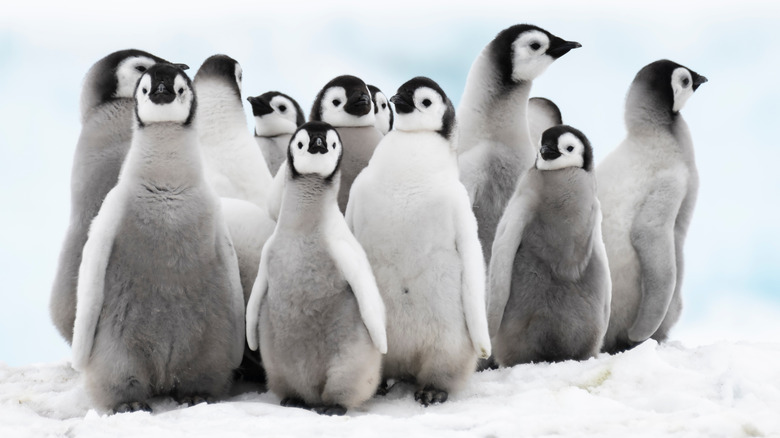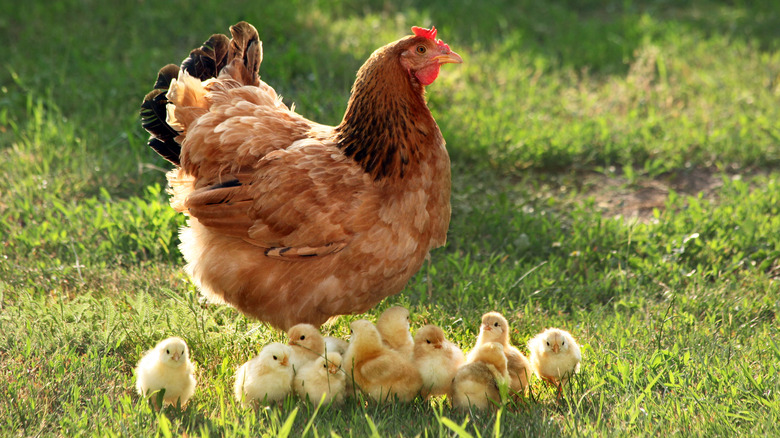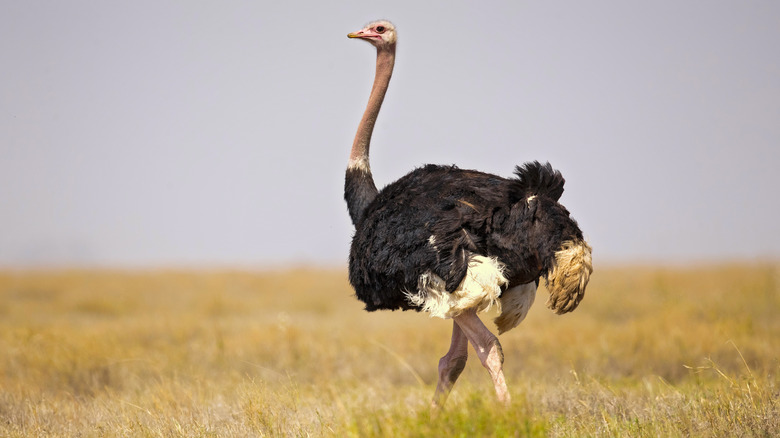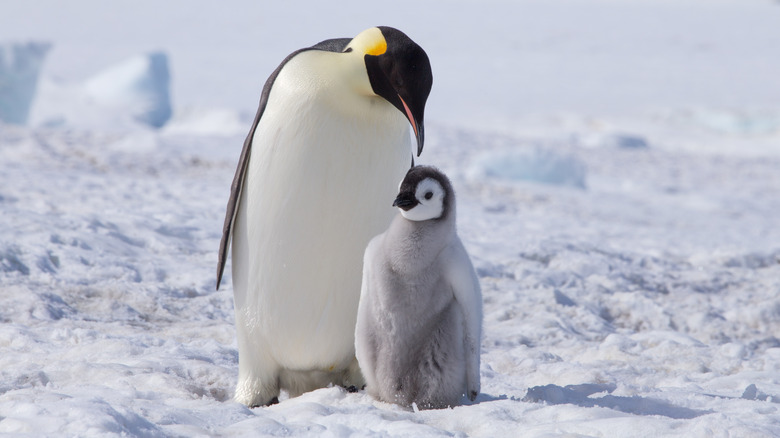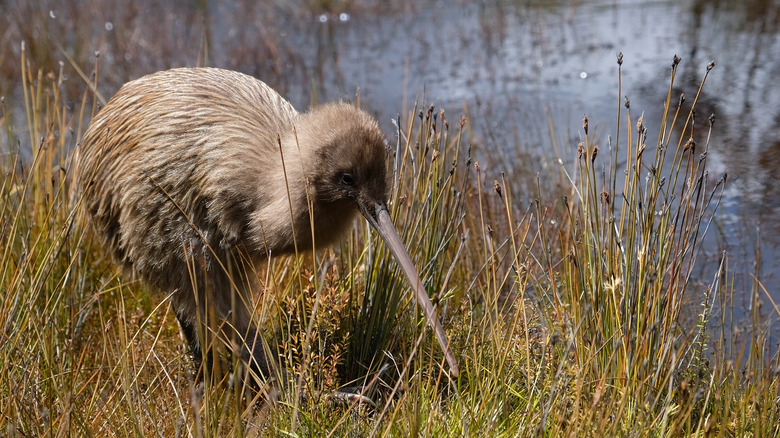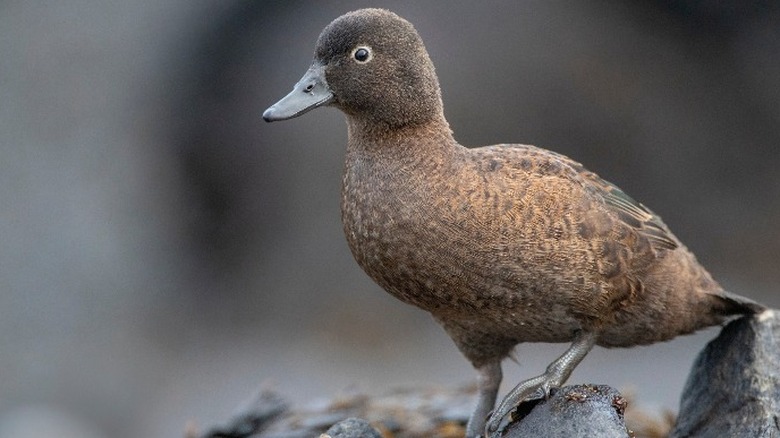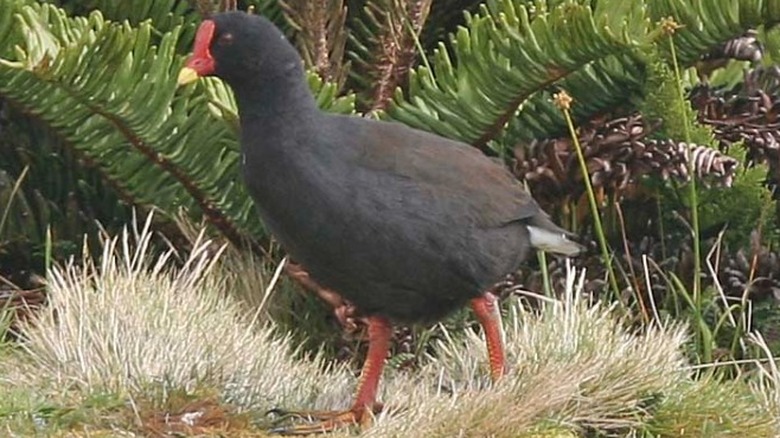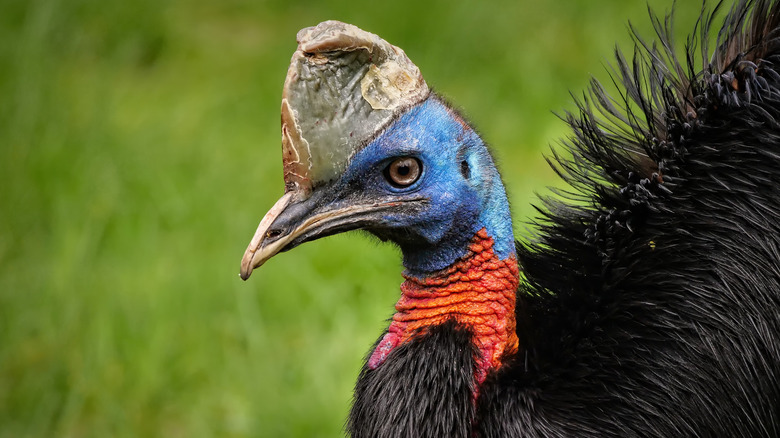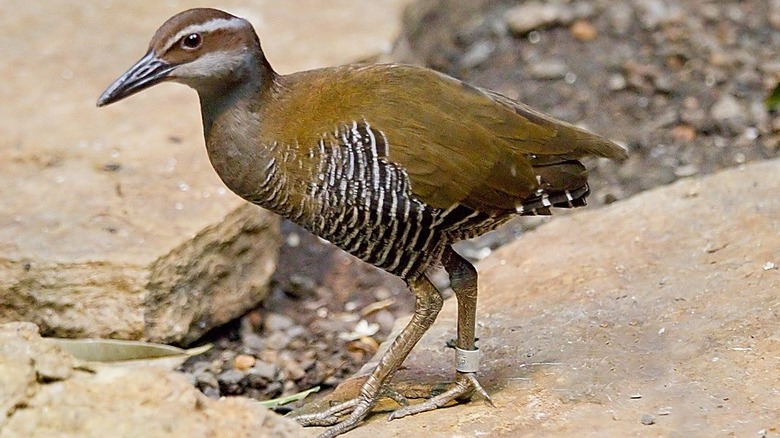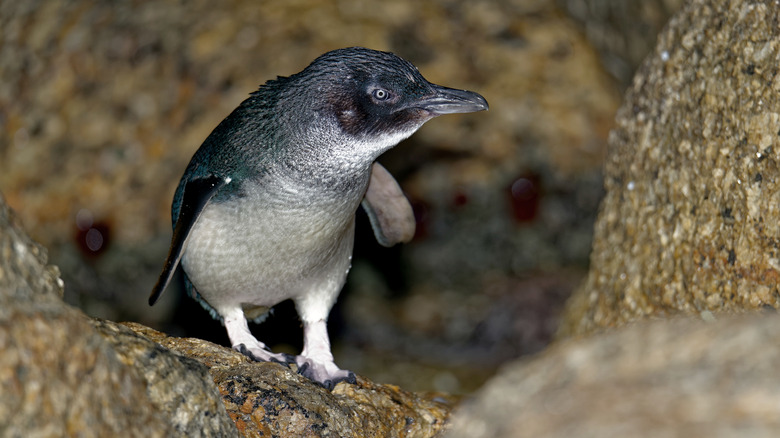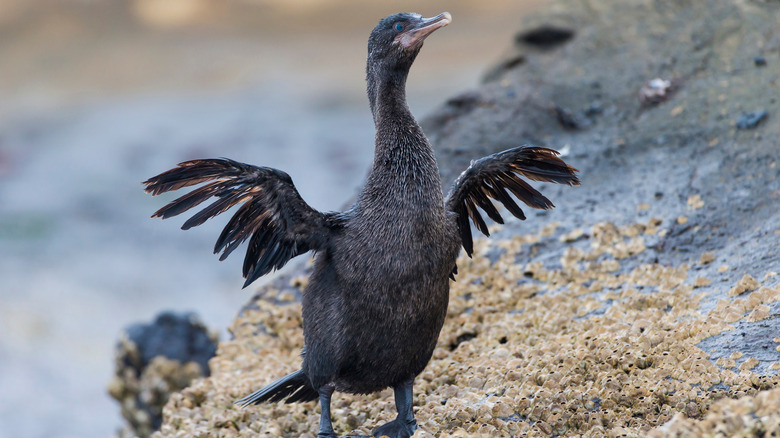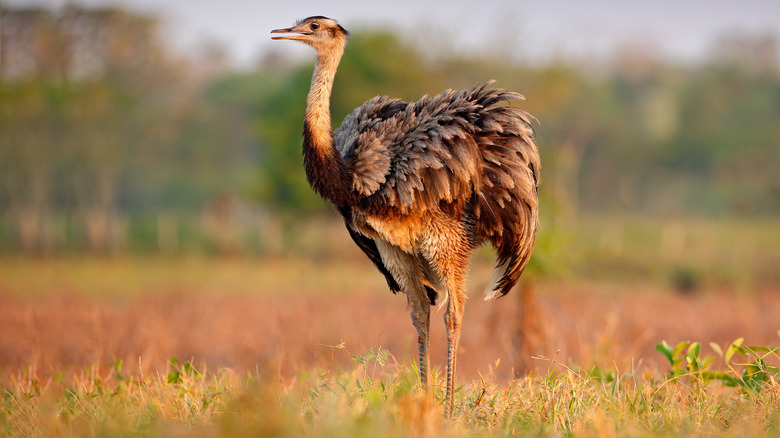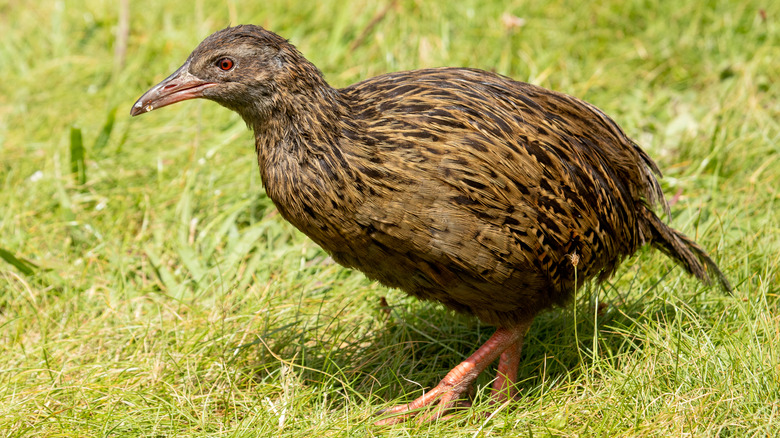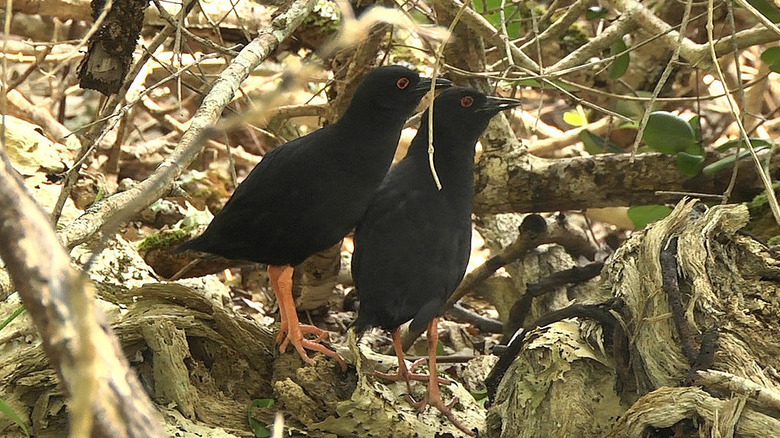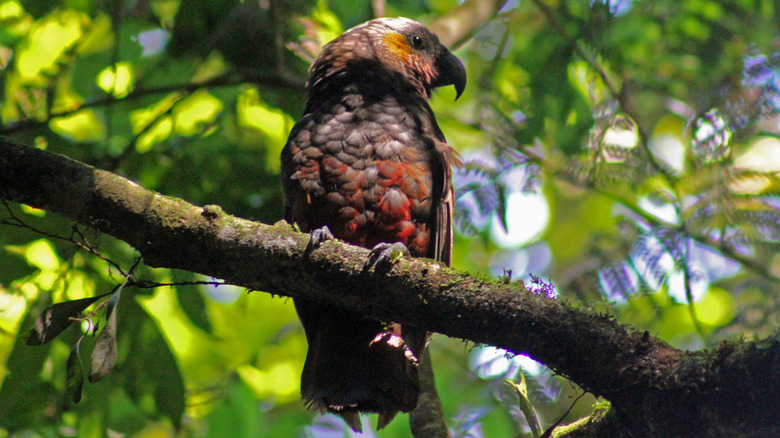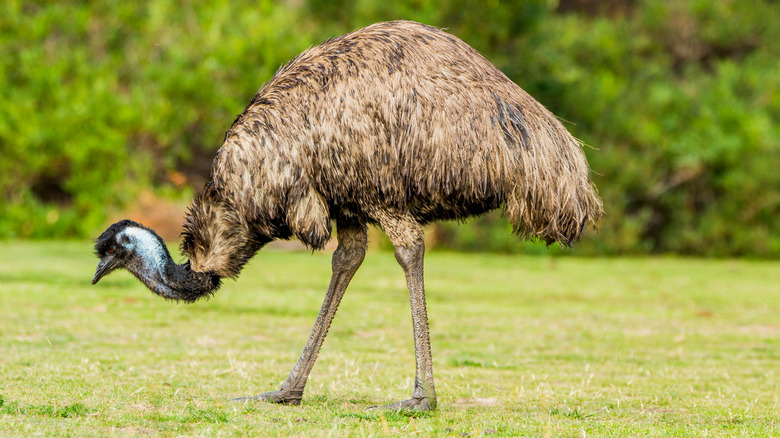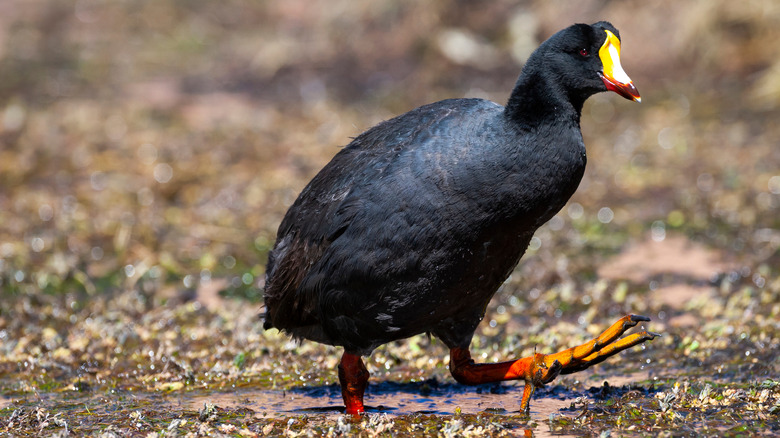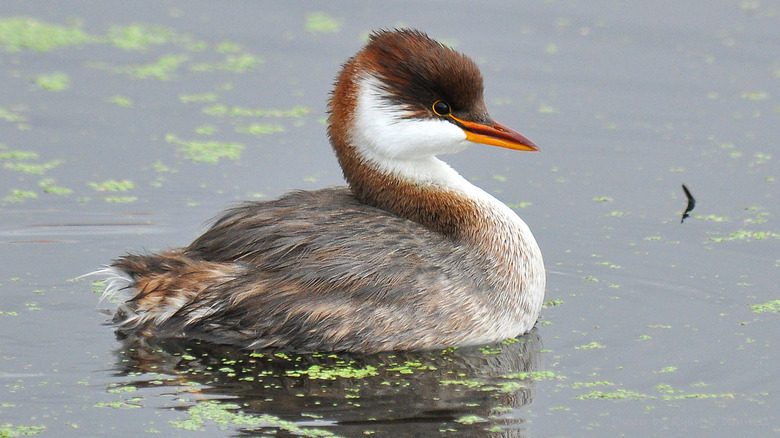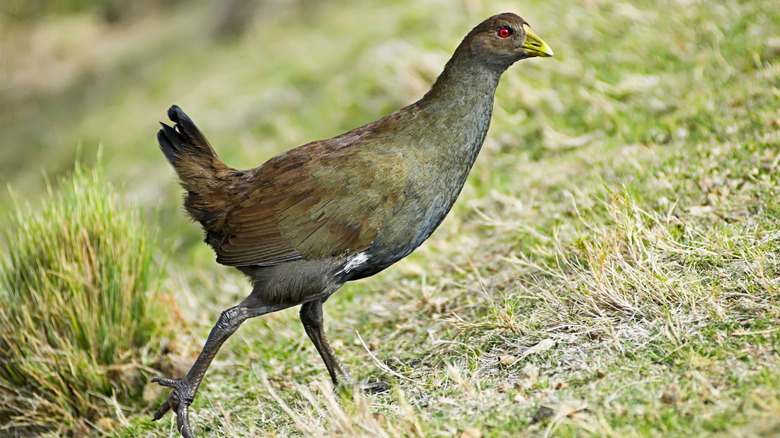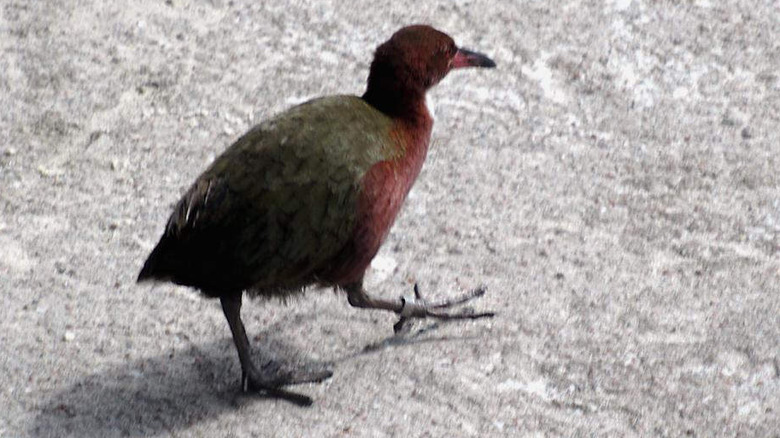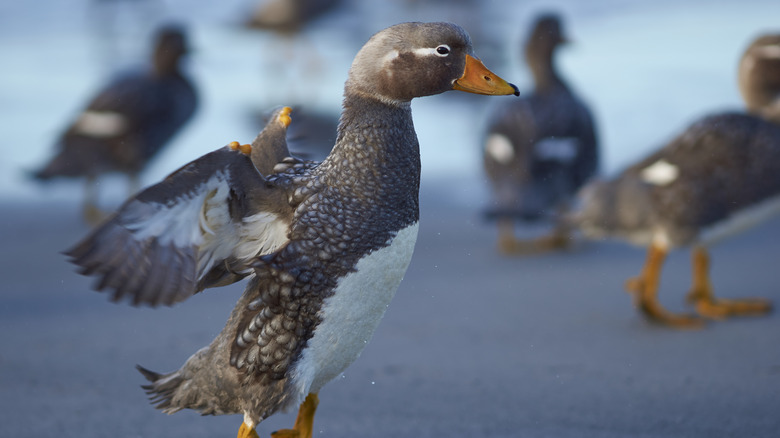20 Birds That Can't Fly
Everyone can name a few flightless birds: ostriches, penguins, and kiwis are a few that usually spring to mind. Many people don't know, though, that being flightless isn't really an avian oddity. In fact there are a total of 57 species of flightless birds (not counting the domesticated ones), and although they live mostly in the southern half of the world they range widely, from Antarctica to Africa to South America.
Scientists used to think that flightless birds like the ostrich are descended from a common ancestor that was also flightless, but they now think that these birds actually lost the power of flight over time. As it turns out, the ability to fly is something that's easily lost, under the right circumstances. That's because flight is actually kind of costly, and not just for those of us who are appalled at how much you have to spend to fly a family of four to Europe.
It's worth noting that "flightless" is a little bit subjective. Some of these birds, like ostriches, can't fly at all. Others can flap their wings and catch a little bit of air, but only fly for short distances. But all of these birds are pretty fascinating. Here are 20 birds that can't (or can barely) fly.
Chickens had flight bred out of them
Let's just start with the obvious. The birds that we know best don't fly, and there is a calculated reason for that.
Domestic birds like chickens, turkeys, and ducks were selectively bred to be meatier, and all that extra weight isn't really compatible with flight. But there's another good reason why domesticated fowl can't fly, and that's because when your chicken flies away, you can't have it for dinner.
The selective breeding process that happened thousands of years ago favored birds that couldn't fly far, perhaps somewhat accidentally because the ones that could fly, well, flew away. But even chickens' wild ancestors, jungle fowl, didn't fly great distances or height. According to Pet Keen, they "roosted in low branches and ate food from the ground." Chickens also have also lost one of their biggest reasons for flying at all — escape from predators. Although predators do still love a nice drumstick, humans do most of the work of protecting domesticated flocks from predatory attack.
Ostriches are too big and funny shaped
At a certain point, size becomes prohibitive when it comes to flight. There are examples of pretty large birds that are capable of becoming airborne, such as the kori bustard, but the kori bustard only weighs around 40 pounds and a large ostrich weighs around 290 pounds, or almost seven times as much as a kori bustard. Even if ostriches were less heavy, they have stubby wings, and what in the world would they do with those super-long legs while airborne anyway?
According to Live Science, the ostrich lost its ability to fly a long, long time ago, when its ancestors decided to capitalize on the big, empty landscape left behind after the extinction of the dinosaurs. Flying birds learned to forage on the ground, and eventually traded flight for speed. The ostrich is actually pretty great at this — it can run as fast as 43 mph when it needs to, and can keep up a steady pace of about 31 mph when it's just out for a nice jog.
Loss of flight was actually a surprisingly successful strategy for the ostrich and other birds like it. Genetic research suggests that this trait occurred three different times amongst ratites (emus, kiwis, and rheas) and that the ostrich's flying ancestor was unique to its species.
Emperor penguins don't need to fly because they can swim
Emperor penguins can dance, but they can't fly. Actually, they can't dance, that was just a stupid movie. But these birds and all other penguins aren't designed to fly in the air, they're designed to fly in the water.
Some birds can fly and swim, but the emperor penguin is especially well adapted to swimming. According to Gizmodo, emperor penguins can remain underwater for around 20 minutes, and they can travel about 1,650 feet through the water before they have to come up for air. What's more, an emperor penguin's feathers have tiny filaments that trap air. When they swim, the air bubbles leave their feathers and reduce drag, which makes them go faster. So they've evolved not just to not fly, but to be awesome at swimming.
They also lack the physique for flying, which should be obvious to anyone who has ever seen an emperor penguin. Also, penguins stink. That has nothing to do with their inability to fly, but it really should be mentioned.
Kiwis can't do anything with their 1-inch wings
Birds that live on islands, like the kiwi, are often incapable of flight. That's because birds populated these islands back when they could fly, then found that the islands were predator-free paradises and lost the ability to fly because it just wasn't that important anymore. Mammalian predators can't cross vast oceans the way birds can, so it was kind of like hitting the birdy jackpot.
New Zealand is a great example of this. At one time, there were 32 species of flightless bird on the islands of New Zealand. Today, there are only 16. So what happened? People moved in and brought other mammals with them, and the mammals ate many of the birds.
According to National Geographic, island birds lose the ability to fly remarkably often. In fact there are at least 1,000 different examples of this happening during evolutionary history. Even island birds that do still fly show signs of one day becoming flightless — they have characteristics like weaker flight muscles and longer legs.
The kiwi is a somewhat extreme example of what happens when you're a bird that's safe from predators. It looks kind of like a tribble with a beak and what's left of its wings are only about an inch long, and are tipped by a weird claw that is just as useless as the rest of the wing.
The Campbell Island teal is a flightless duck
Ducks don't seem like they should be able to fly, and that's probably because most people are used to watching domesticated ducks waddling and swimming but not really taking wing. Those familiar breeds of domesticated ducks are indeed incapable of real flight, for the same reason chickens are incapable of flight — because they're bred for meat and eggs, and flight was something that got selected out of them.
Wild ducks, though, are a different story. Mallard ducks, for example, are migratory, which means they can not only fly, they can fly a very long way. But a few wild ducks followed their domesticated siblings down the evolutionary path of flightlessness. One of these is the Campbell Island teal, a duck that only grows to be about 18 inches long and was thought extinct in the wild until a small population was discovered on tiny Dent Island in the 1970s. Biologists took a few of them for captive breeding and in 2006 released 100 captive-bred teals back into the wild population. There are now about 200 Campbell Island teals, but their future depends on keeping the islands where they live free from invasive species, like the rats that nearly drove them to extinction in the first place.
The Gough Island moorhen tries but can't
Tristan da Cunha is widely believed to be the most remote island in the world. It's 1,750 miles from South Africa and almost 2,100 miles from South America. Its closest neighbor is the island of Saint Helena, which is 1,500 miles away. So how exactly does a bird become extinct when living on the most remote island in the world? Well, people live there, too, so ...
According to a study published by PLOS ONE, the flightless moorhen that was endemic to Tristan da Cunha became extinct in the 19th century and was replaced by another flightless moorhen that used to only live on the nearby island of Gough. So being flightless hasn't come between the moorhen and its desire to live on a remote island paradise. Good for it.
Both of these populations of moorhens can/could catch a little bit of air, much like a chicken, but they aren't/weren't capable of real flight. Other moorhens, which look kind of like a cross between a duck and a chicken, will fly but don't do it very well. The Gough Moorhen is stockier than the common moorhen (found in Europe, South America, Asia, and Africa), but more importantly, it has stubbier wings, so it's not able to do much more than flap pathetically. But that didn't stop it from moving on to bigger and better islands, so if nothing else the Gough moorhen should at least be role model following your dreams.
The cassowary is a flightless hell-bird
The cassowary is the closest thing in our world to a velociraptor, and it's a good thing it can't fly because a flying velociraptor is probably just about the most terrifying thing you can imagine. Cassowaries weigh around 170 pounds, are blue, and have a strange bony mohawk on their heads, kind of like Yondu only without the cheerful disposition. In fact this animal was called the "world's most dangerous bird" by the Guinness Book of World Records, mostly because in 2019 a man in Florida was attacked and killed by one of his pet cassowaries.
Cassowaries are found in Papua New Guinea, Indonesia, and Australia. Like the ostrich, the cassowary is descended from a bird that lost its ability to fly. It shares a common ancestor with the much less-scary emu, though the two diverged roughly 25-30 million years ago, thus giving the cassowary plenty of time to become a bold, primary color and join the Ravagers while the emu just morphed into something like a small ostrich.
The Guam rail can't fly away from invasive brown tree snakes
The Guam rail is a bit like a roadrunner in that running is totally its thing, and flying is not. The main differences between a roadrunner and a Guam rail are that a Guam rail doesn't drop anvils on coyotes and isn't able to fly at all (the roadrunner will fly in order to escape a predator — if only the Looney Tunes version had known that).
According to the National Zoo, the Guam rail is a small bird, with a maximum size of around 11 inches. It was once found only on Guam, but today it lives on the nearby islands of Rota and Cocos, because like so many other flightless island birds it fell victim to an invasive species. While a lot of island birds succumb to mammalian predators, the Guam rail was nearly eradicated by the brown tree snake, an 8-foot long predator that probably arrived on American cargo ships in 1944. The snakes didn't just eat most of the Guam rails, they also ate 10 other native birds to extinction. The snakes are still on Guam, which is why the rails now live exclusively on nearby islands.
The little blue penguin had the same ancestor as the emperor penguin
Since we talked about the world's largest penguin, it seems only fair to also talk about the world's smallest, especially since there are 19 different species of penguin, none of them can fly, and we can't really talk about every one of them.
The little blue penguin is also called the fairy penguin, and adults only weigh about 2.6 pounds, which is roughly 25% the size of an average housecat. According to Penguins-World, they are also the only blue penguin, and they live on the sunny shores of New Zealand, Australia, and neighboring islands.
All penguins — including the little blue penguin and the emperor penguin — are descended from a common ancestor that lived around 70 million years ago. This was probably a flying bird that was also evolving the ability to swim. Eventually, this ancestor dropped its aerodynamic wings in favor of wings that were more efficient in the water.
Flightless cormorant
The flightless cormorant is another example of an island bird. This species hails from Galapagos, the birthplace of Darwin's theory of evolution. According to Discovering Galapagos, it is the only one of all 29 species of cormorant that doesn't fly — the rest of them are actually pretty great aviators and some, like the double crested cormorant, are migratory.
Because it did all of its recent evolving on an island, the Galapagos cormorant became adept at swimming and lost the need for its wings, which are now almost comically diminutive. The bird got bigger, and is in fact the largest of all cormorants, with the biggest specimens weighing as much as 11 pounds.
These birds are great swimmers, but they don't swim the way penguins do. Instead, they have evolved especially powerful hind legs and they use them kind of like propellers to move through the water.
Like just about every other island, humans messed up the cormorant's island paradise by introducing dogs, cats, rodents, and (weirdly) donkeys. The only predators that are endemic to the Galapagos Islands are birds. The largest of these is the Galapagos hawk, which mostly eats insects, lizards, and small birds.
The greater rhea is a flightless single dad
Rheas look similar to ostriches or emus, but these are South America's version of a giant, flightless bird. According to Live Science, they are distantly related to other ratites like ostriches, cassowaries, and emus, but they probably became flightless independently.
Despite their separate origins, ostriches and rheas have very similar breeding habits — the males have a little harem and all the females lay their eggs in the same nest. The male rhea incubates the eggs and takes care of the babies. Male cassowaries and male emus do the same, because the females can't handle the pressure of motherhood and always go running off shortly after laying all their eggs. (Family life for ostriches is a bit more balanced — the males split incubating duties with one female and help care for the chicks after they hatch). All of this has absolutely nothing to do with any ratite's inability to fly, but you totally need to know about this because single dads also exist in nature and we should all be here for that.
Weka are kind of like the chicken version of a trash panda
The weka is another flightless New Zealander. It's chicken-sized and looks a little bit like someone stuck a bird's head on a feathered coconut. According to New Zealand Birds Online, weka are a conundrum for the locals — tourists love them because they're cute and bold and they aren't afraid to ask for handouts. The locals get frustrated by them because they're fearless scavengers. Much like the American raccoon, they often raid gardens and chicken coops. Also like raccoons, they're protected, so you can't trap or kill them without government permission.
Like so many other flightless island birds, weka are extinct in parts of New Zealand, probably because of invasive animals like ferrets and dogs. Some subspecies are considered threatened, but you can't really move them around to other islands because they can threaten the endemic species on those islands. So conserving these birds can be a challenge, especially since the alternative — eradicating invasive predators — is expensive and maybe even impossible.
The weka's closest flying relative is the banded rail, which is only about 1/6th to 1/3rd the size of a weka, but probably thinks it's so much cooler.
The Henderson Island crake is the king of trash
The Henderson Island crake is one of just four landbirds endemic to an uninhabited, microscopic (former) paradise in southeastern Polynesia. The island itself is only 25 square miles and it's a long way from anywhere — according to The Guardian, it takes a day to get there by sea if you start from its closest inhabited neighbor. Unfortunately for the crake and everything else that lives there, Henderson Island appears to be at the crossroads for all the world's garbage-carrying ocean currents. There are roughly 38 million pieces of plastic waste on the beaches, weighing in at about 40,000 pounds, and something like 3,750 new pieces of garbage wash up on the beach every single day.
The crake is a flightless rail that resembles a pudgy blackbird with long orange legs. Despite the fact that it lives on a small island and its eggs and chicks are regularly predated by invasive rats, the birds appear to be doing fine. At last count, there were around 8,500 of them, compared to only around 3,250 back in the late 1980s. A 2011 attempt to eradicate rats failed and also killed a bunch of crakes (they were just as susceptible to the poison as the rats were) but captive breeding has helped ensure the species' survival. So until Henderson Island is completely buried under plastic waste, the crakes should be okay — if life on a garbage dump really counts as okay.
The kakapo is the world's only flightless parrot
Most parrots can fly, though they seem to prefer sitting on pirates' shoulders and eating saltines. There is one exception to this rule, though: the kakapo. You won't be at all surprised to hear that this flightless parrot hails from New Zealand. Biologists of yore named it Strigops habroptilus, which means "owl-face soft-feather." If you look at one face-on you can see why — the kakapo has a heart-shaped face like an owl and does look pretty soft, though you could also say that about an ostrich so it's kind of a weird distinction.
According to Wired, the kakapo is the only flightless parrot, and this bird doesn't even pretend like it can fly the way chickens do. It never flaps its wings. Instead, they're just there for balance and occasionally parachuting. The kakapo can climb trees and sometimes uses its wings to slow itself down when jumping to the forest floor.
Kakapos also make great pets, because they like people and you don't have to clip their wings. You can't actually own a kakapo, though, because like so many other flightless island birds they are endangered. There are currently only about 150 kakapos left in the wild.
Emus are more closely related to a flighted bird than to ostriches
The emu is Australia's second large, flightless bird. Unlike its cousin the cassowary, which lives in the north, has a bright blue head, and is terrifying, the emu only has a slightly blue head and is much less terrifying. Don't let its goofy looks fool you, though. Emus aren't as big as ostriches or as Yondu-like as cassowaries, but they can still be up to 6 feet tall, and they have claws that are capable of eviscerating you. According to Wild Explained, emus are most dangerous when they're protecting their offspring or when they are cornered or threatened.
Like the other ratites, emus are (obviously) flightless, and like cassowaries they are related to the tinamous, which is their closest living flying relative. There seems to be some disagreement over whether the tinamous qualifies as a ratite — Current Biology puts it in its own group but recent genetic research suggests that the moa, an extinct ratite, is more genetically similar to the tinamous than it is to any other ratite, so more recent discussion puts them all in the same family. Of the living species of ratite, the emu and cassowary have more genes in common with the tinamous than the other ratites do. The tinamous, though, hung onto its ability to fly while the emu and cassowary gave that up altogether.
The giant coot is too fat to fly, and that's somehow worked out just fine
The giant coot doesn't live on an island. It lives in the Andes mountains in lakes and bogs, and doesn't fly mostly because it's too fat to do so.
The giant coot is one of the two largest species of rail. Adults weigh between 4.5 and 6 pounds, have disproportionately small heads and bright red, yellow, and white beaks. Although giant coots are considered flightless birds, it's really only the adults that don't fly. According to oiseaux-birds.com, juveniles can and do fly, and continue to do so until they grow too large to successfully become airborne. So while other flightless birds lost the physical structures necessary for flight (ratites don't have keels, for example, which are the bones that the powerful flight muscles attach to), giant coots are just too big to use those structures. So really, giant coots are kind of like the bird evolution version of Homer Simpson.
Giant coots live at high altitudes — up to 21,000 feet, in fact — and they build their nests on platforms in deeper water, which helps to keep predators at bay. Being a long way away from things that might want to eat them is also a good strategy for the adults, since they can't really escape predators the way most other birds do.
Who needs the air when you've got a whole lake
Like the giant coot, the Titicaca grebe lives in lakes high in the Andes. It is one of only two remaining flightless grebes — the rest of them were driven to extinction by humans, or at least by species that humans introduced. According to Scientific American, the titlan grebe fell victim not to the usual suspects like introduced mammals and snakes, but to an invasive fish. The largemouth bass that were introduced to its native habitat made the lake uninhabitable for the grebe. Similarly, the Colombian grebe became extinct in 1977, also because of a fish, at least in part. Rainbow trout introduced to its habitat learned to eat grebe chicks, and the bird couldn't reproduce fast enough to make up for the constant losses.
The Titicaca grebe is mostly confined to Lake Titicaca, which is on the border between Peru and Bolivia. Because it lives on the water, this bird is not really vulnerable to predators like foxes, which means being flightless isn't much of a disadvantage.
Some researchers think that grebes and certain other flightless birds may have started the march towards permanent flightlessness during molting season, when some species lose so many feathers they aren't able to fly at all. During those times, they need to develop adaptations to protect themselves from predators — things like spending all their time in deeper waters, where predators can't go.
The Tasmanian native hen is the real Tasmanian devil
If you grew up in the 1980s, you'll likely remember the cartoon Tasmanian Devil, an ugly werewolf looking thing that traveled in a tornado and ate everything in its path. You were probably disappointed to discover that the real Tasmanian devil looks kind of like a large rat crossed with a ferret and has a top speed of about 8 miles per hour.
The animal that should have been traveling in a tornado is the Tasmanian native hen, which could have also given Road Runner a run for his money. Native hens can achieve ground speeds of 30 miles per hour (compared to the roadrunner's comparatively wussy 20 miles per hour). According to ABC, today, native hens only exist on the island of Tasmania. They were once also present in Australia, but humans came between them and their long-term survival.
Unlike flightless island birds and even the lake dwellers of the Andes, it's a mystery how and why the Tasmanian native hen lost its ability to fly. These birds have always been surrounded by predators, yet for some reason flight still wasn't useful enough to keep. But hey, who needs flight when you've got speed? There aren't too many predators that can keep up with prey moving at 30 mph, except maybe a cheetah, and they're on a different continent.
The Aldabra rail evolved flightlessness twice
Of the 150 or so different species of rail, 31 of them are flightless, so rails that can't fly are actually really common and even more prolific than flightless ratites. One of these flightless rails is the chicken-sized Aldabra rail, the only flightless bird in the Indian Ocean. This particular bird is quite special, though, because it is one of only a few examples of iterative evolution, which is when two different populations of the same species evolve the same adaptation at different times.
According to Phys.org, the Aldabra rail became flightless twice — the first time was after a population of white throated rails migrated east from Madagascar and colonized the atoll of Aldabra in the Indian Ocean. These birds eventually lost the ability to fly, but were wiped out by rising seas 136,000 years ago. Then, about 36,000 years later, after the sea level fell and the atoll reappeared, a second colony of white throated rails moved in and also lost the ability to fly. These are the Aldabra rails that are still around today.
The extinct Aldabra rail and the one that currently lives on Aldabra are not exactly the same species, but still, it's kind of like watching one phoenix rise from the ashes of another.
Flightless Falkland Island steamer ducks are exactly the same as the flighted ones
There are four species of steamer duck, and three of them can't fly. One of these is the Falkland Island steamer duck, which lost the ability to fly in the usual way — by colonizing some predator-free islands off the coast of South America.
Interestingly, this duck isn't the only steamer duck on the Falkland Islands, but it is the only one of the two that can't fly. The other endemic duck is simply called the flying steamer duck, for obvious reasons. At least 25% of male flying steamer ducks are non-flying steamer ducks, though, so the species does seem to be moving in the same direction as its flightless cousins. Even more interestingly, the flying steamer ducks and the Falkland Island steamer ducks aren't actually cousins at all — recent analysis has discovered that the two populations are actually genetically identical.
The other two flightless steamer ducks live on the mainland, so it's not like safety from predators was the only reason why any of these ducks lost the ability to fly. Instead, a study published by the Proceedings of the Royal Society hypothesized that a bigger body and smaller wings gives the steamer ducks advantages like better diving skills and efficient locomotion in water. And they don't need to migrate, either, because they live in a place that's hospitable all year long.
